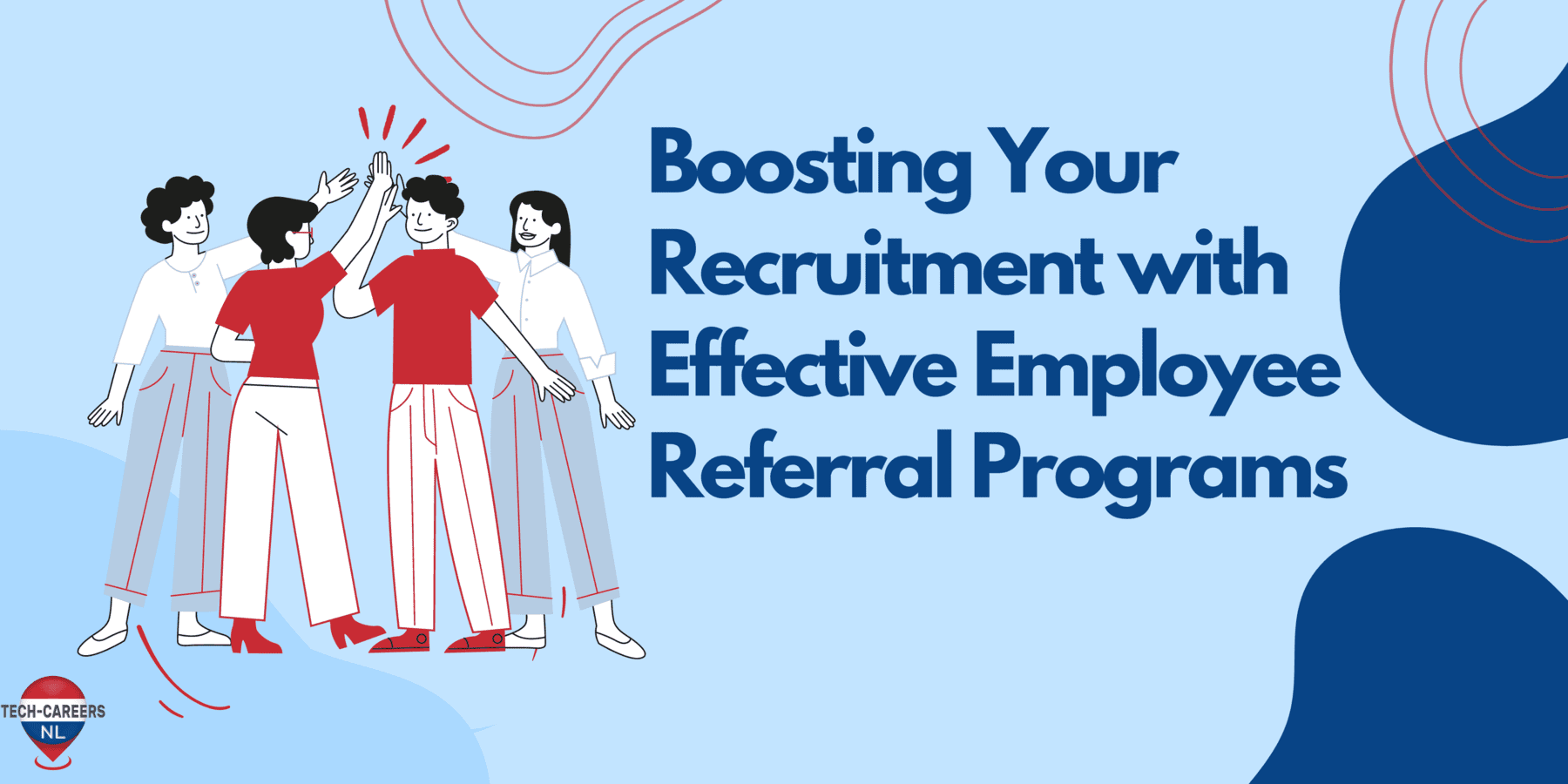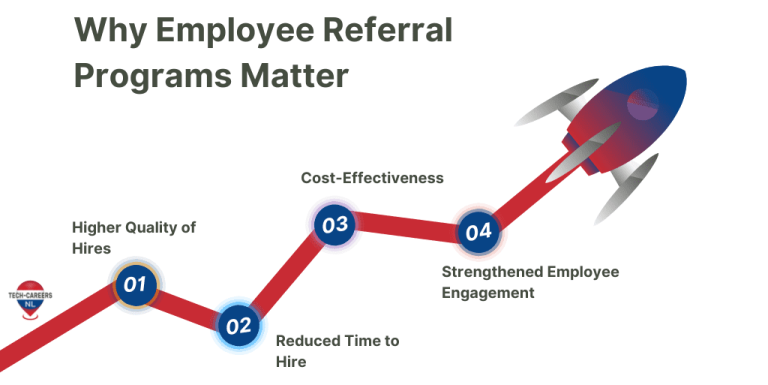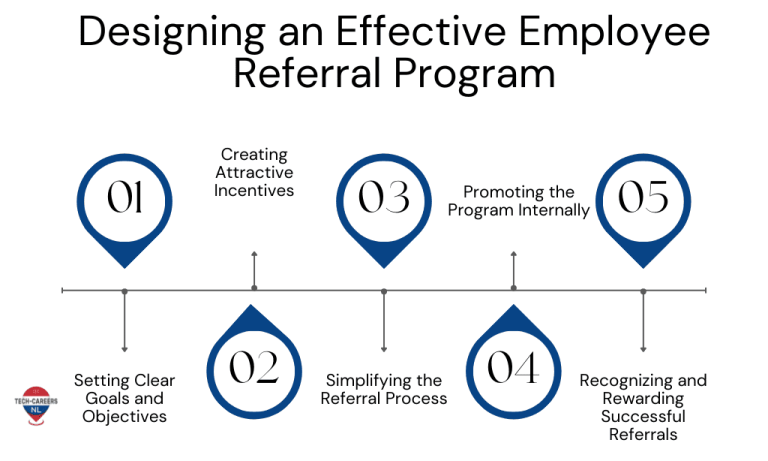
In today’s competitive job market, finding the right talent is more challenging than ever. Companies are constantly seeking innovative ways to attract high-quality candidates who not only possess the necessary skills but also align with the company’s culture. One of the most effective strategies to achieve this is through employee referral programs. These programs have become a cornerstone of recruitment efforts, especially in industries where cultural fit and technical expertise are paramount, such as tech companies.
Why Employee Referral Programs Matter
Best employee referral programs leverage the power of existing employees to identify and recommend candidates who they believe would be a good fit for the organization. This approach is particularly effective in enhancing recruitment efforts for several reasons:
- Higher Quality of Hires: Employees are more likely to refer individuals who they know personally and who they believe will thrive in the company’s environment. This results in candidates who are not only skilled but also a good cultural fit. In tech companies, where collaboration and innovation are key, having employees who understand the nuances of the tech company culture refer candidates can significantly improve the quality of hires.
- Reduced Time to Hire: Traditional recruitment methods can be time-consuming, often involving multiple rounds of interviews and lengthy background checks. With employee referral programs, the hiring process is typically faster. Referred candidates come pre-vetted by current employees, which can expedite the screening process and reduce the time to hire. This is particularly valuable in the fast-paced tech industry, where the ability to quickly onboard talent can give companies a competitive edge.
- Cost-Effectiveness: Recruitment can be expensive, especially when relying heavily on external agencies or job boards. Employee referral programs, on the other hand, often require less financial investment while delivering higher returns. The reduced need for external recruiters, combined with the faster hiring process, translates to significant cost savings. Moreover, employees who feel valued for their referrals contribute to lower turnover rates, further reducing recruitment costs over time.
- Strengthened Employee Engagement: Involving employees in the recruitment process through referral programs enhances their engagement and connection to the company. When employees participate in shaping the workforce, they feel a greater sense of ownership and responsibility for the company’s success. This is particularly true in tech companies, where fostering a strong tech company culture is crucial to maintaining a motivated and cohesive team.

In conclusion, the best employee referral programs are more than just a tool for filling vacancies—they are a strategic asset that can significantly enhance a company’s recruitment efforts. By focusing on quality hires, reducing time and costs, and fostering a strong company culture, these programs empower organizations to build a workforce that is not only capable but also committed to the company’s long-term success.
Key Benefits of Employee Referral Programs
Employee referral programs have proven to be one of the most effective recruitment strategies for companies across various industries. When designed and implemented correctly, they offer numerous benefits that can transform the hiring process and contribute to long-term business success. Let’s explore the key benefits of successful employee referral programs and what makes them stand out as employee referral programs that work.
1. Enhanced Candidate Quality
One of the most significant advantages of employee referral programs is the enhanced quality of candidates. Employees are naturally inclined to refer individuals who they believe will excel in the company’s environment. They understand the company’s culture, values, and expectations, making them excellent judges of who would be a good fit. This is particularly important in industries like tech, where finding candidates who can thrive in a collaborative and innovative environment is crucial.
Successful employee referral programs often lead to hires who not only have the technical skills required but also align well with the company culture. This alignment results in higher job satisfaction, better performance, and longer tenure, as these employees are more likely to be engaged and committed to the organization’s goals.
2. Faster Hiring Process
Time is a critical factor in recruitment, especially in fast-paced industries like tech. Employee referral programs can significantly reduce the time it takes to fill open positions. Referred candidates often come with a built-in endorsement from current employees, which can speed up the screening and interview processes. This allows companies to make hiring decisions more quickly, reducing the time a position remains vacant.
Employee referral programs that work streamline the recruitment pipeline, ensuring that only the most suitable candidates are considered. This efficiency not only saves time but also reduces the burden on HR teams, allowing them to focus on other strategic initiatives.
3. Increased Employee Engagement
Another key benefit of employee referral programs is the boost in employee engagement. When employees are involved in the recruitment process, they feel a greater sense of ownership and pride in the company’s success. This involvement fosters a stronger connection to the organization, as employees see the direct impact of their contributions.
4. Cost Savings
Recruiting new employees can be a costly endeavor, especially when relying heavily on external agencies or job advertisements. Employee referral programs, however, offer a cost-effective alternative. By tapping into the networks of current employees, companies can reduce their reliance on expensive recruitment channels. Additionally, referred candidates are often easier to onboard and train, leading to further cost savings.
Employee referral programs that work not only lower the initial recruitment costs but also contribute to long-term savings by improving employee retention rates. Employees who are referred by their peers tend to stay with the company longer, reducing turnover and the associated costs of rehiring and retraining.
5. Strengthened Company Culture
Employee referral programs play a crucial role in shaping and maintaining a strong company culture. When employees refer individuals they know and trust, it helps build a workforce that shares common values and work ethics. This alignment strengthens the company’s culture, fostering an environment where employees feel connected and motivated to contribute their best work.
In tech companies, where culture is often a defining feature of the workplace, booming employee referral programs ensure that new hires not only have the necessary skills but also embody the company’s core values. This cultural alignment is key to sustaining a positive and productive work environment.
Designing an Effective Employee Referral Program
Creating a successful employee referral program requires more than just asking your employees to recommend candidates. To truly leverage the benefits of such programs, it’s essential to design a system that aligns with your company’s goals, culture, and specific industry needs. Whether you’re filling Netherlands IT jobs or looking to build a global team, here’s how to design company employee referral programs that work effectively.
1. Setting Clear Goals and Objectives
The first step in designing an effective employee referral program is to establish clear goals and objectives. What are you hoping to achieve with the program? Are you looking to reduce time-to-hire, improve the quality of candidates, or perhaps lower recruitment costs? Setting specific, measurable goals will help guide the design of your program and ensure that it aligns with your overall recruitment strategy.
For example, if your company is focusing on filling IT jobs in the Netherlands, you might set goals around attracting candidates with specific technical skills or experience in the Dutch market. Clearly defined objectives will allow you to tailor the referral program to meet these specific needs.
2. Creating Attractive Incentives
Incentives are a critical component of any company employee referral program. To motivate employees to participate, the incentives must be appealing and relevant. These incentives can be monetary, such as cash bonuses, or non-monetary, like extra vacation days, gift cards, or even public recognition.
It’s important to understand what motivates your employees. In some companies, especially in the tech industry, non-monetary incentives such as opportunities for career development or access to exclusive company events might be more appealing. Additionally, consider offering tiered incentives—rewarding employees for successful referrals, as well as for their efforts even if the referral isn’t ultimately hired. This approach encourages ongoing participation in the program.
3. Simplifying the Referral Process
For an employee referral program to be successful, it must be easy for employees to participate. A cumbersome or complicated process will deter even the most enthusiastic employees from making referrals. Simplifying the referral process involves creating user-friendly systems that allow employees to submit referrals quickly and easily.
Consider integrating the referral process into existing HR platforms or creating a dedicated portal where employees can track the status of their referrals. In regions where specific IT skills are in demand, such as Netherlands tech jobs, you might also include features that help employees match potential candidates’ skills with open positions, making the referral process even more straightforward.
4. Promoting the Program Internally
Even the best-designed employee referral program won’t succeed if employees aren’t aware of it. Effective internal promotion is key to ensuring widespread participation. Use multiple channels to communicate the program to employees, such as email newsletters, internal social media platforms, team meetings, and posters around the office.
It’s also helpful to share success stories and testimonials from employees who have benefited from the program. Highlighting how the program has successfully filled Netherlands IT jobs or other key positions can inspire others to participate. Regularly reminding employees of the program and the incentives available will keep it top of mind.
5. Recognizing and Rewarding Successful Referrals
Recognition is a powerful motivator. Acknowledge and reward employees who make successful referrals not only through the promised incentives but also through public recognition. This could be as simple as a shout-out during team meetings, a feature in the company newsletter, or a mention on internal communication channels.
Recognition reinforces the value of employee contributions and encourages others to participate. Moreover, when employees see their peers being recognized, it builds a positive feedback loop that fosters a culture of collaboration and mutual support.

Best Practices for Sustaining Employee Referral Programs
Creating an employee referral program is just the first step; sustaining it over the long term is crucial for maintaining its effectiveness and ensuring ongoing participation from employees. To keep your employee referral programs vibrant and productive, you need to implement best practices that continuously engage employees, refine the program, and leverage technology. Here’s how to sustain your referral program for lasting success.
1. Continuous Communication and Feedback
One of the most important aspects of sustaining an employee referral program is maintaining open lines of communication. Regularly update your employees on the program’s progress, including how many referrals have been made, the success rate of those referrals, and any changes or updates to the program.
Providing feedback to employees who participate in the program is equally important. If an employee’s referral leads to a hire, ensure they are informed and recognized. If the referral isn’t successful, offer constructive feedback if possible, so the employee understands what type of candidate is being sought. This transparency builds trust in the program and encourages ongoing participation.
Additionally, encourage employees to share their experiences and suggestions for improving the program. This input can provide valuable insights into what’s working well and what could be refined. By fostering a culture of continuous improvement, your employee referral programs will remain dynamic and responsive to the needs of your workforce.
2. Regularly Review and Adjust the Program
Even the most successful employee referral programs need regular review to ensure they remain effective. Periodically assess the program’s performance by analyzing key metrics such as the number of referrals, the quality of hires, the time to hire, and retention rates of referred employees. These metrics will help you understand the impact of the program and identify any areas that need adjustment.
For instance, if you notice a decline in participation, it might be time to refresh the program with new incentives or simplified processes. Alternatively, if certain types of roles are consistently underrepresented in referrals, you may need to tailor your messaging or adjust your incentives to focus on these areas.
Adjusting the program based on data-driven insights ensures that it continues to meet the evolving needs of your company and keeps employees engaged in the referral process.
3. Leveraging Technology
Technology can play a significant role in sustaining and enhancing your employee referral programs. Utilizing HR software and platforms that integrate referral processes can streamline the submission and tracking of referrals. These tools often include features that allow employees to see the status of their referrals, which can motivate them to continue participating.
Moreover, technology can automate the distribution of rewards and recognition, ensuring that employees are promptly and consistently acknowledged for their contributions. This automation not only reduces administrative burdens but also enhances the overall experience for employees.
Additionally, consider leveraging social media and internal communication platforms to promote referral opportunities. Employees are more likely to refer candidates when it’s easy to share job postings and referral links with their networks. By integrating your referral program with these platforms, you make it simpler for employees to participate and extend the reach of your recruitment efforts.
4. Keeping Incentives Fresh and Relevant
Incentives are a driving force behind the success of employee referral programs, but they can lose their appeal if they remain static. To sustain interest and participation, regularly review and update your incentives to ensure they remain attractive and relevant to your employees.
Consider offering a variety of rewards that cater to different employee preferences. For example, some employees might value monetary bonuses, while others might prefer extra time off, professional development opportunities, or unique experiences. By keeping incentives fresh and aligned with what your employees value most, you ensure that your referral program remains a compelling and motivating opportunity.
5. Celebrating Successes
Celebrating the successes of your employee referral programs is crucial for maintaining momentum and enthusiasm. Regularly highlight the program’s achievements in company meetings, newsletters, and on internal platforms. Share stories of successful hires who came through the referral program and the positive impact they’ve had on the team.
By celebrating these successes, you reinforce the value of the program and show employees that their efforts are making a tangible difference. This recognition not only boosts morale but also encourages other employees to participate, knowing that their contributions are valued and rewarded.
Start Building Your Dream Team Today
Implement a powerful employee referral program to attract top talent, streamline your hiring process, and strengthen your company culture.


 Previous Post
Previous Post Next Post
Next Post